
When the warmth of summer suddenly comes to a halt, will your garden be ready for cold nights and beautiful, sparkling frosty mornings?
Many gardeners know the feeling all too well, of casually checking the weather forecast, only to realize that it calls for rapidly declining temperatures.
Sometimes the first frost can be expected; other times, it sneaks up on you – leaving you with just enough time to run out to the garden and grab the last of the green tomatoes and peppers before night falls.
If an unexpected light freeze is headed your way, you can protect many plants, including pumpkins and squash, by covering them with a basic sheet or blanket for the night. Then remove the sheet when temperatures begin to rise again in the morning.
Related Reading: 13 Ways To Protect Tomato Plants From Frost
Always be aware that condensation can harm the plants if the protective cloth layer is left on too long. If using plastic as a barrier, be sure there is always a cloth layer first, next to the plants, with plastic on top.
However, if you’re prepared for the cold, your options for harvesting late into the season only increase.
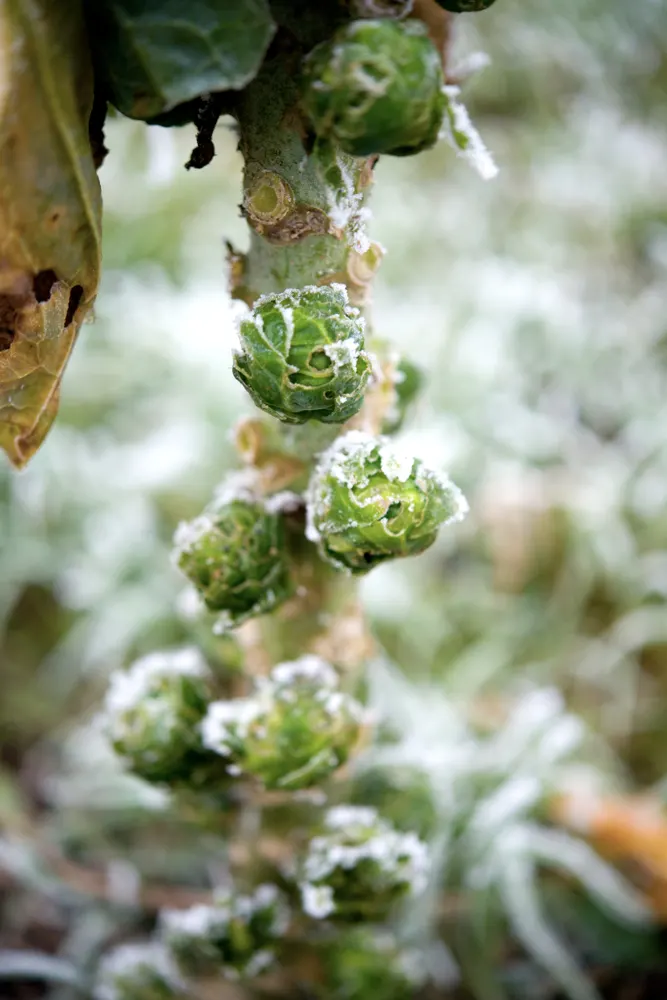
Naturally, the options for extending your growing season will vary in price, with greenhouses coming in at the highest value, yet there are plenty of low-cost options to explore. Continue reading to find out which is best for you and your garden.
Reasons to extend your growing season
There are several reasons you might want to extend your growing season. Let’s start with the most obvious.
You have a short growing season
If you live and grow where the summers are momentary and the winters are prolonged, you’ll always be on the lookout for ways to increase your harvest, along with the variety of fruits and vegetables you can grow.
To enjoy fresh food longer
Another reason to extend the growing season is to have fresh, homegrown food for longer. Food that doesn’t need to be dehydrated or canned straight away.

Grow long season crops
You may also want to extend the growing season to have access to long-season crops (or cool-season crops) such as:
You plan to sell what you grow
Or you may simply want to provide food for sale, as you work directly from your own home and garden.
No matter what your reason(s) for choosing to extend the growing season, there are ways to make your harvesting dreams come true.
Some of them are instant fixes. Others are carefully planned out ahead of time, as is the case with choosing to plant more cold-tolerant crops.
1. Cold Frames
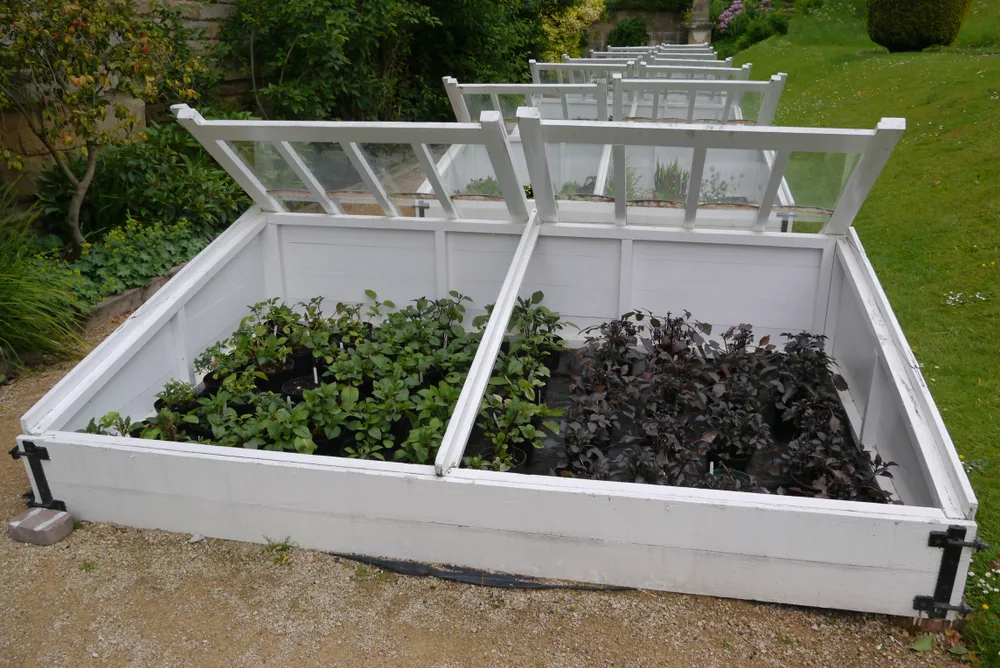
When we think about extending the growing season, we tend to think about stretching it out into the autumn/winter months.
Yet there are times when we wish it could come earlier.
A cold frame can help with that.
What’s great about frames is they don’t have to be sophisticated, or fancy in order to work well in cold temperatures, or wet weather.
Cold frames use the energy of the sun to heat up the soil (or prevent it from freezing), to get the season started earlier (or extend it).
This is perfect if you’re thinking about planting peas, cucumbers, arugula, lettuce, green onions and more. A cold frame is also an excellent place to start your seedlings, you’ll plant in the garden when conditions are more favorable.
2. Hoop Houses
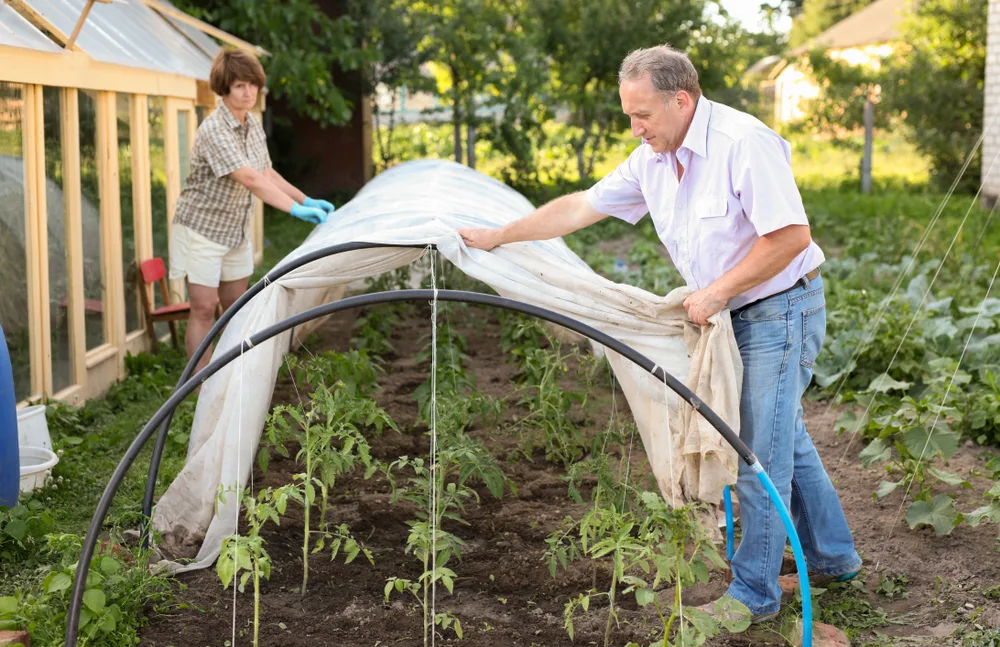
Somewhere between the smallness of a cold frame and the diversity of a greenhouse, there is the hoop house.
They can be built to just cover you plants, or tall enough for you to walk under. Most often, however, they are temporary and/or seasonal.
In short, a hoop house is a tunnel made from a series of hoops made from different materials. Wood (freshly harvested and soaked hazel works well), metal or plastic are the most common. These are, in turn, covered with a layer of greenhouse plastic.
Hoop houses are often used to extend the growing season of warm-weather crops such as:
They’re also a good place for extending the harvest of cool-weather crops during the coldest of months.
The things you have to watch out for, are heat and water. Experience and irrigation methods will take you far along the way.
3. Greenhouses
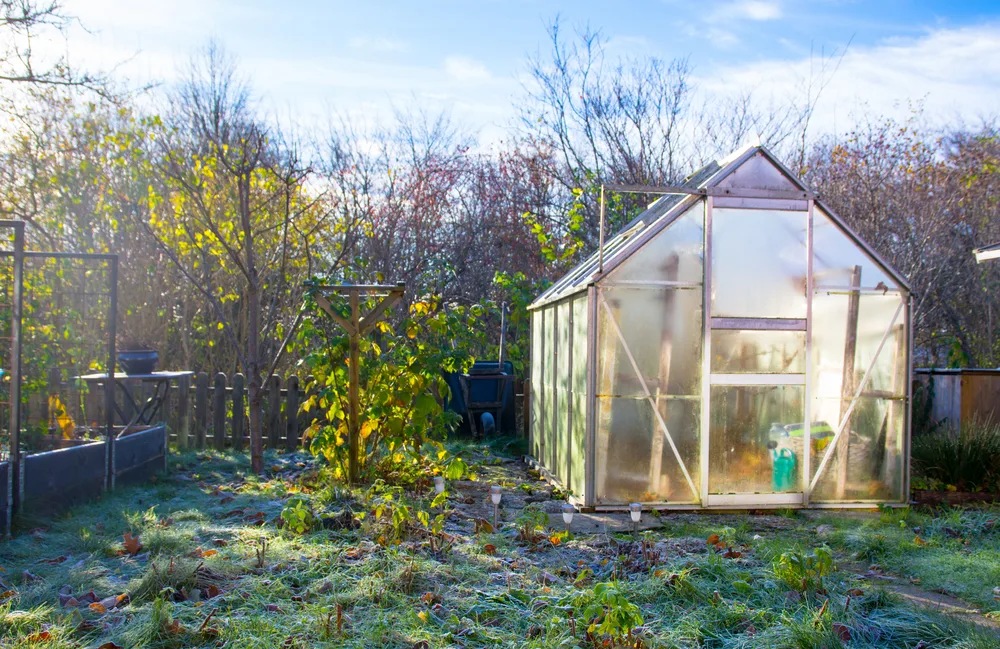
Somewhere out there is a greenhouse in the right shape and size, made out of this material or that, fitting your budget or a much larger one.
Greenhouses are definitely not one size fits all – and that’s a good thing. It means there is variety waiting to be discovered.
Before you choose a greenhouse, however, it’s useful to know what you intend to grow.
Do you need shelves to start seedlings? Will you be growing in pots, or directly in the soil? Is this an addition to your garden, or is this your only growing space for food?
A greenhouse is a more permanent structure than either cold frames or hoop houses. It can even be heated (a bonus if it’s attached to your home). Greenhouses can be made from your own DIY creativity using reclaimed materials, custom ordered or purchased online.
Made of glass, old windows, or perhaps a portable greenhouse? They all do the same thing, in slightly different fashion, to graciously extend your growing season.
4. Row Covers
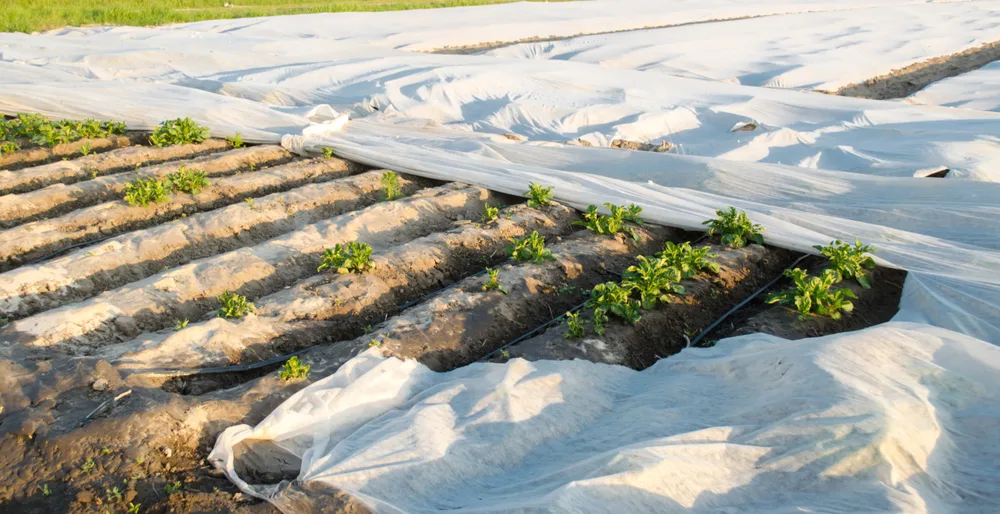
Row covers are used for much more than protecting your late-season crops from dwindling temperatures, including the prevention of cross-pollination.
They can also be used throughout the season to protect against unwanted insects, rabbits and deer. Row covers can also be used to shelter your garden crops from too much sun. At the same time allowing rain and moisture to fall through.
One potential concern with using row covers, or garden fabric, is the material itself.
The fabric used for row covers is generally a fine polyethylene or spun-bonded polyester, which cannot be recycled. On the upside, it can be reused for several seasons if it’s taken care of and stored properly for winter.
A DIY approach to making a temporary row cover includes using hoops with old bed sheets tossed over them. In the case of late-ripening squash or pumpkins, you can simply lay the sheets or light blankets over the leaves to prevent the cold from coming too close to your unharvested crop.
If you have extra stakes laying around, you could hammer them into the ground and cover with sheets/blankets/fabric, sort of like a fort for your plants.
Just be sure to remove them the following morning.
If you have a large garden area to cover and are looking for low-cost ways to extend your growing season, go ahead and dedicate some old sheets from a thrift store to your gardening endeavors. It costs nothing and saves you some time until harvest.
5. Cloches
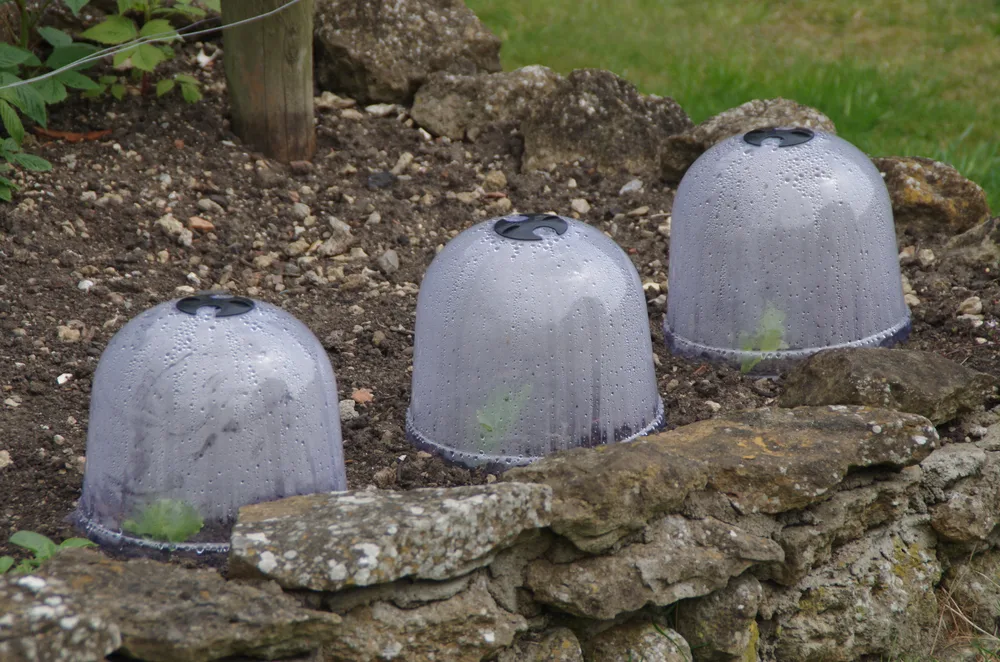
Cloches are simply mini row covers, put in place over individual plants until all danger of cold has passed.
Very simply, they can be made out of plastic milk jugs and other clear plastic bottles.
If you are entirely serious about gardening in style, you can opt for attractive glass cloches instead. The latter has zero chance of blowing away, plus it adds an element of interest to your garden.
One of the greatest benefits of using cloches is that they’re easy to move around as needed in the garden. In spring, they help to pre-warm the soil, getting it ready for planting sooner, whereas in fall, they offer frost protection to fall-planted crops.
Cloches may also come to your aid if birds are a nuisance, or if hail is on order.
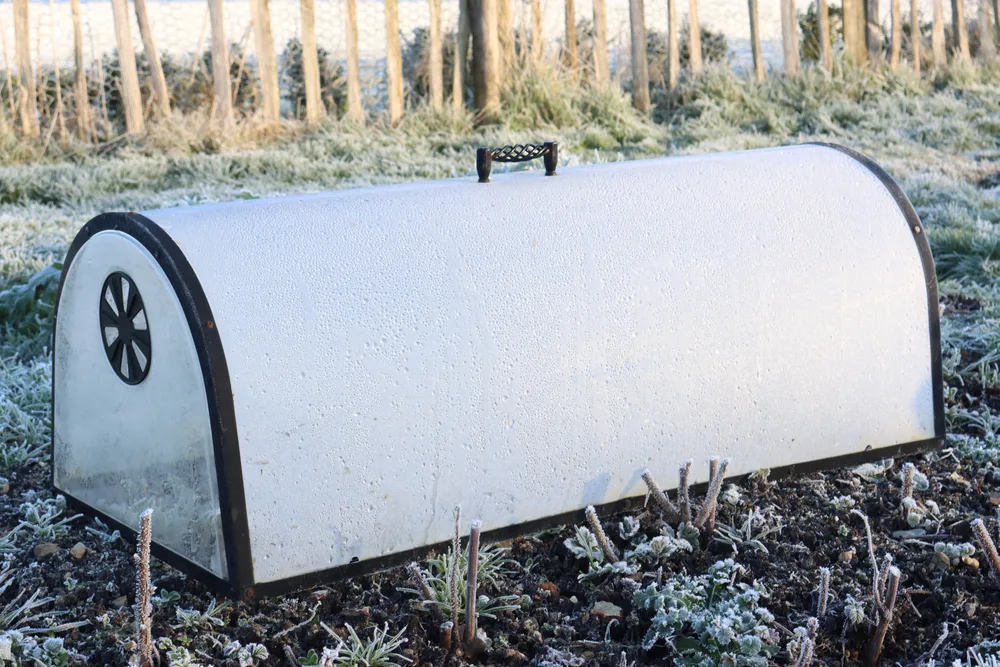
Carrots, peas, parsley and radishes will all grow well under a cloche. When it comes to frost, you can place them over any low-growing vegetables and herbs. Be sure that the plants underneath are well ventilated again in the morning. Propping the cloche up with a rock achieves this easily.
6. Insulation Barrier
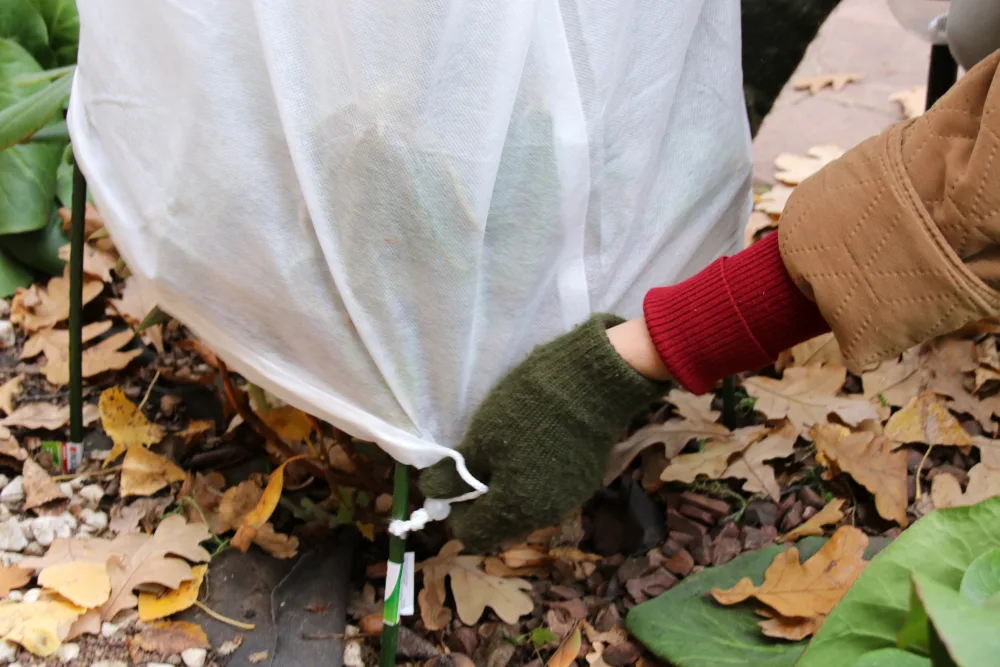
An insulation barrier can be what we already mentioned, such as gently laying an old blanket over your crops for a night or two with low temperatures.
If you need to protect a few plants from freezing, you may already have all that you need to take action. Stakes, some string, chicken wire and fall leaves are all that it takes to provide a temporary thermal layer that can protect your precious garden crops.
Surround your plant with stakes, wrap chicken wire or fabric around it (securing it safely), fill it with leaves and you’re done. Plant protected.
7. Mulch
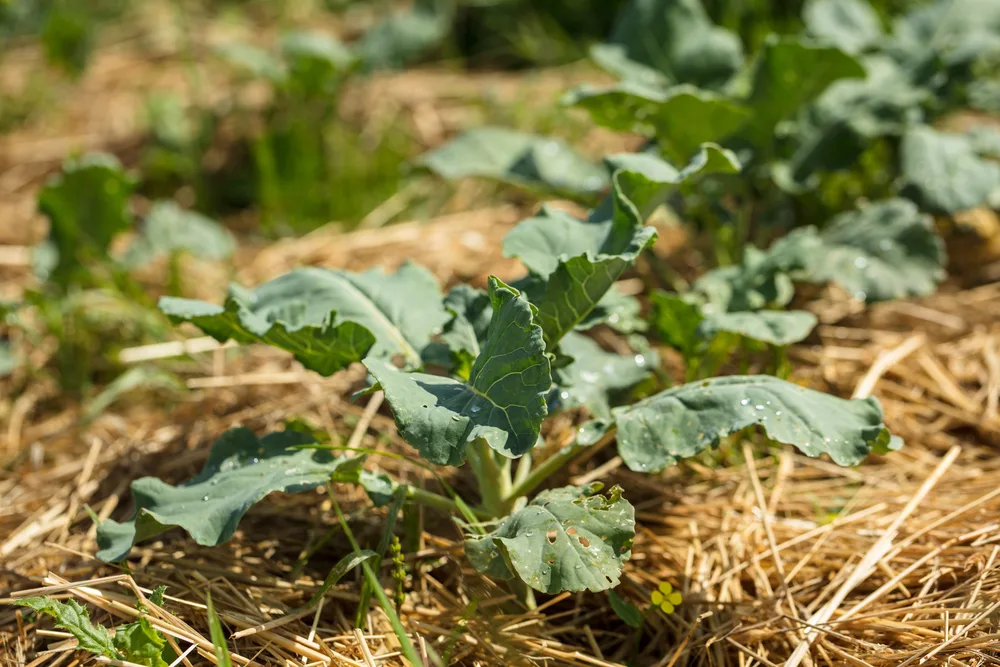
Speaking of protecting your plants with leaves, did you know that leaf mold can be used as a temporary solution to protect your plants from frost as a mulch?
Other materials such as hay, straw and grass clippings can also be used when it comes to mulching your garden and safeguarding your plants. A no-dig garden is a great example of this. The soil warms up sooner than later, as it’s covered with several inches of mulch, at the same time staying moist.
Using mulch to protect your crops in winter, is another story. Success may depend on your area, though it’s said that applying a mulch layer of 18-24 inches above cold-tolerant crops such as Jerusalem artichokes, parsnips and parsley, will allow you to harvest all throughout the winter, only harvesting as you wish to eat.
On the other hand, mulch is a terrific addition to the garden as it protects the bare soil from winter erosion. Mulching also helps to ensure the survival of your other hard-working, edible perennials.
In any case, mulch will always help to improve the soil. Here are 19 brilliant mulch options to consider for your garden.
8. Plant Cold-Tolerant Crops
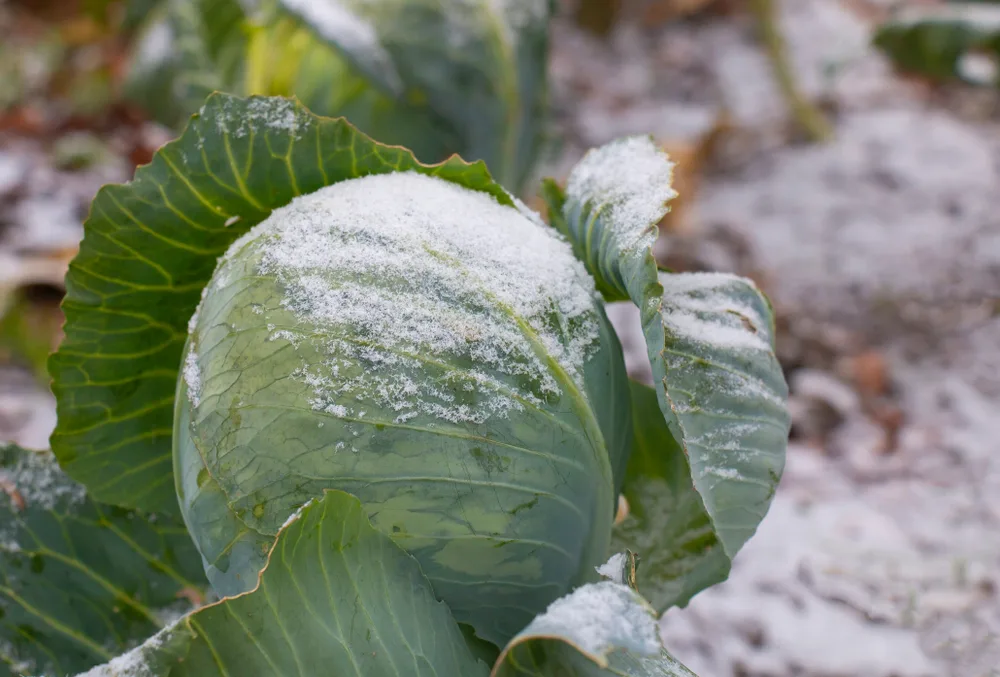
Nothing compares to the flavor of juicy ripe tomatoes in summer, or the varying degrees of spicy peppers that soon follow.
Yet, when the sun trades its presence for clouds and autumn leaves, it’s best to be prepared to lengthen your harvest season with crops that appreciate the change in weather. If you’re someone who’s immensely interested in eating seasonally, this is also the route to go.
Exchange your affection for warmth-loving crops with the following cold-tolerant vegetables and you’ll be harvesting well into frosty territory:
- kale
- collard greens
- mustard greens
- bok choy
- cabbage
- kohlrabi
- rutabaga
- beets
- rocket (arugula)
- spinach
- leeks
- bunching onions
- carrots
- black radishes
- and of course, Brussels sprouts
Another low-cost way to extend your garden harvest is to use succession planting throughout the season to achieve your harvest goals. Be sure to keep a garden journal, so you can better approximate harvest dates.
If frost does sneak in unexpectedly, know that there are at least 10 vegetables that taste better after frost.
9. Raised Beds
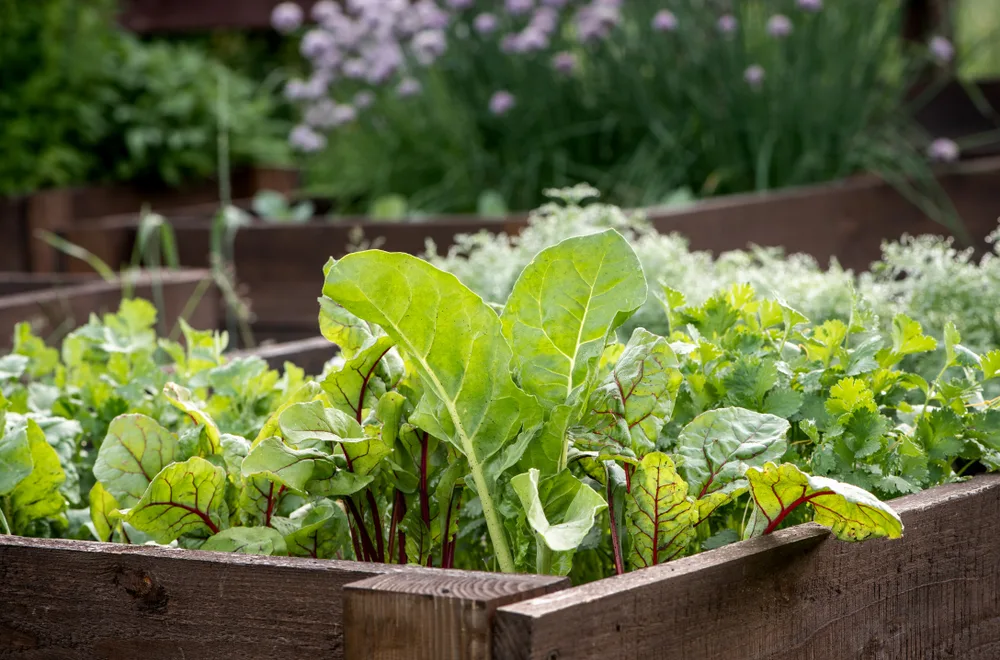
Not everyone has space for raised beds, but if you do, you may come across some unexpected advantages.
In raised beds, with the soil being elevated, it dries out quicker and warms up faster, being distanced from ground level.
This alone may be enough to have you planting earlier and harvesting later than other gardeners who are planting directly in the ground.
Raised beds also have the added benefit of clearly defined borders, making it easy to turn them into small hoop houses, or by adding row covers, in times of need.
If you’re sitting on the fence about whether raised beds may actually increase you harvest and extend your growing season, here are 45 raised bed ideas for your garden to explore.
10. Replant in Pots
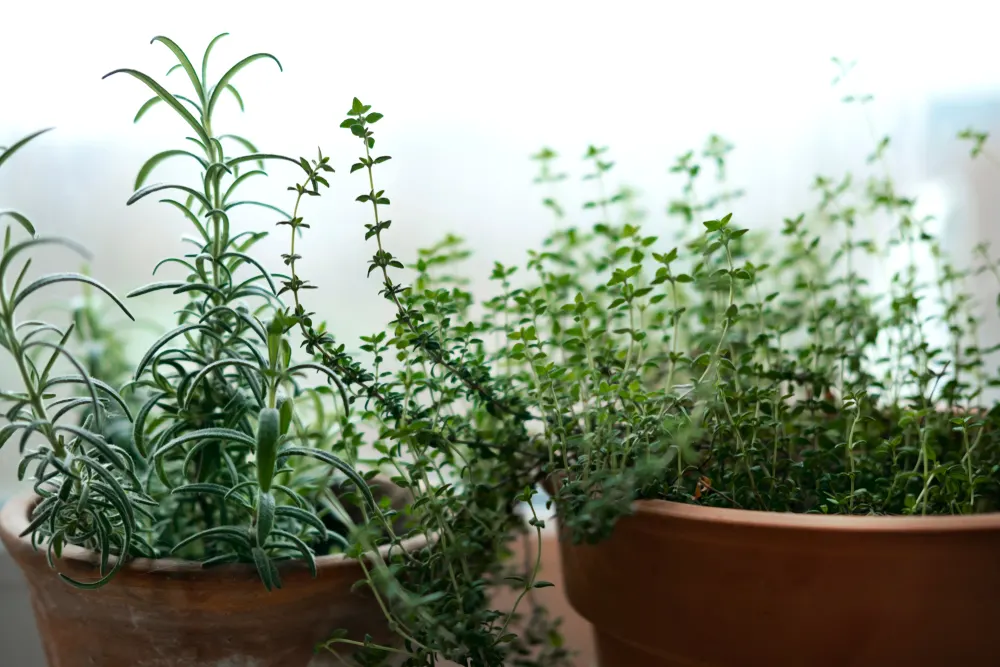
If you have extra clay pots lying around, I’m sure they would be happy to be put to use.
With frost on the doorstep, or rather at your garden gate, you may want to dig up the sensitive herbs and, replant them to keep them inside for the winter.
They will, of course, need more attention, such as making sure they have plenty of sunlight, water and fresh air.
You may even need to lend a helping hand by offering them an indoor grow light. You’ll be rewarded for the effort. Not only can herbs turn into delicious houseplants, but they can also brighten your day with their greenery as well.
When colder nights come knocking, be sure to cut back and re-pot your mint, chives, thyme and rosemary the first chance you get.
What works for someone else, may not work the best for you. But with so many low-cost ways of extending your growing and harvest season, you’ll always find a way through the frostiest of nights.

Get the famous Rural Sprout newsletter delivered to your inbox.
Including Sunday musings from our editor, Tracey, as well as “What’s Up Wednesday” our roundup of what’s in season and new article updates and alerts.

